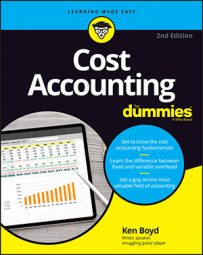Assume the cost of goods available for sale are $1,751,163 and $1,260,837 for the heavy-duty blower and the yardwork blower. Say the separable costs are $1,200,000 and $912,000. If you know the separable costs and the cost of goods available for sale, you can compute the joint cost allocation. The first table shows the process.
| Heavy-Duty | Yardwork | Total | |
|---|---|---|---|
| Cost of goods available for sale | $1,751,163 | $1,260,837 | $3,012,000 |
| Less separable costs | $1,200,000 | $912,000 | $2,112,000 |
| Equals joint cost allocation | $551,163 | $348,837 | $900,000 |
Now calculate the gross margin percentage. Say your sales values are $2,000,00 and $1,440,000 for heavy-duty and yardwork blowers. The total cost is the cost of goods available for sale from the first table. The gross margin percentage is the gross margin divided by the sales value. For each product, the gross margin percentage is the same (12.442 percent) as the company’s overall gross margin.
| Heavy-Duty | Yardwork | Total | |
|---|---|---|---|
| Sales value (A) | $2,000,000 | $1,440,000 | $3,440,000 |
| Total cost (B) | $1,751,163 | $1,260,837 | $3,012,000 |
| Gross margin (A – B) | $248,837 | $179,163 | $428,000 |
| Gross margin percentage | 12.442 | 12.442 |
If the heavy-duty product has the higher sales value, it ends up with a higher gross margin in dollars than the yardwork product. However, both sale values are multiplied by the same gross margin percentage. Both products have a gross margin of about 12.5 percent (rounded). That means that about 87.5 percent of sales value represents cost of goods available for sale.

